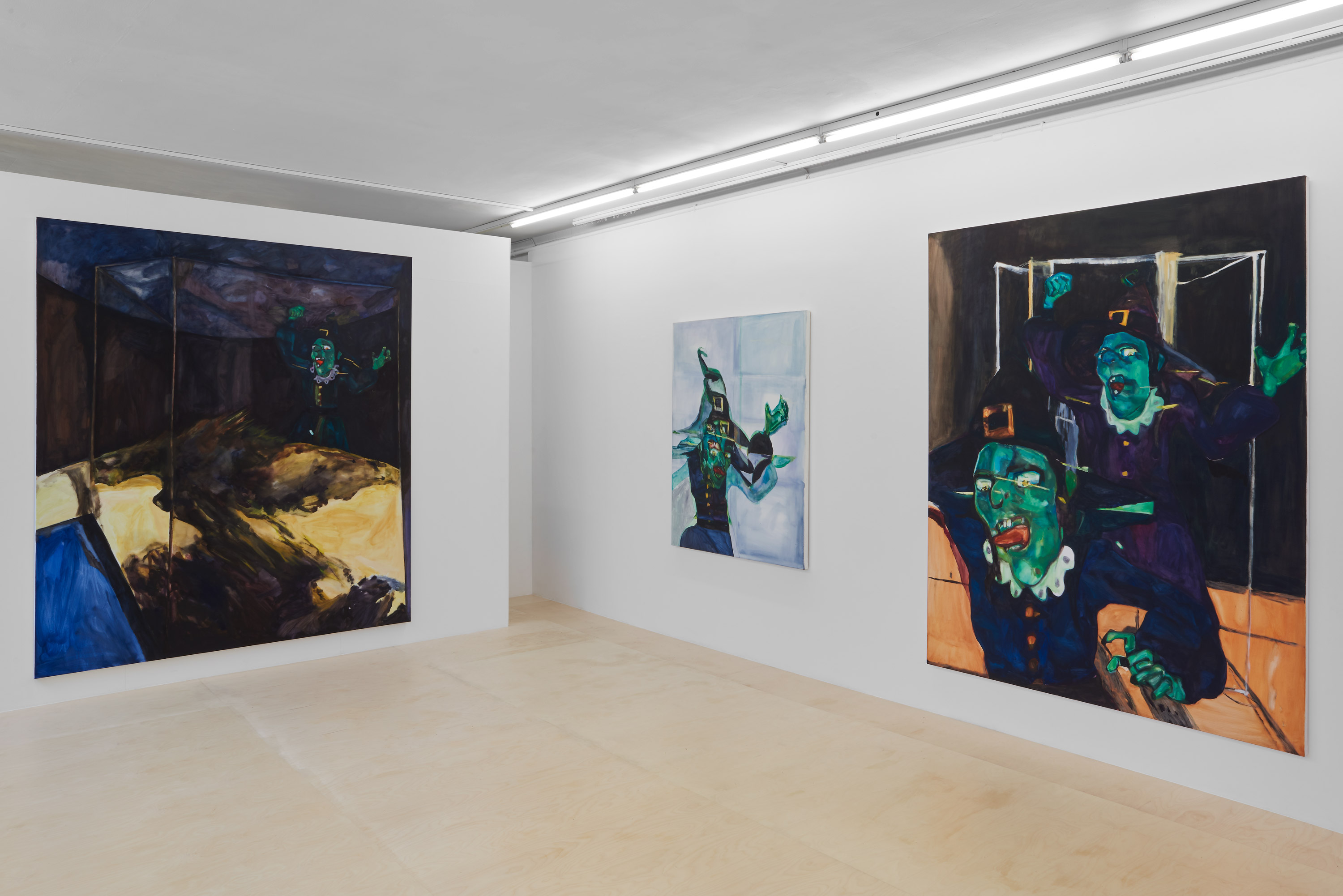In Mostly Women, Sara Knowland presents three paintings, each depicting a green-faced witch in a state of motion, rushing through a half interior, half exterior landscape. Signifying a continuing interest in feminist voices, for Knowland, the figure of the witch proves useful in examining female-ness, its depiction and expression. The use of the humorous cartoon of the Wicked Witch of the West with her buckled hat, purplish clothing and emerald skin engages a universally recognisable motif of a shapeshifting figure that oscillates between good and evil, between human and creature, between male and female.
Cartoons themselves operate within a strangely ineffable non-space, interrogated and reinforced in these paintings by Knowland’s uncomfortable compositional arrangement and conflation of spatial depth. Complicating the flatness of the visual language of the cartoon, Knowland viscerally paints the rawness of emotion, rage, and lustiness onto her canvases, animating her figures into near three-dimensionality. The grotesque pervades as tongues, teeth and flesh stimulate slippages into a mischievous meatiness.
Interested in the connotations carried by the word “West,” this cartoon figure affords Knowland the opportunity to invoke our current agitated contemporary experience in her work. In recent months, allusions to witch hunts and burnings have permeated political metaphor and reinforce a worryingly still-prevalent misogynistic patriarchy. Historically—in fairytale, literature and cinema—the villainous witch character does not fulfil the physical, emotional or behavioural expectations of women, therefore remaining unable to represent either feminine or masculine.
The exhibition borrows its title from a solo presentation of work by the Dutch American abstract expressionist painter Willem de Kooning that was held at Gagosian Gallery in New York in 2000. Besides further problematising gender binaries, this title makes evident the complicated relationship Knowland maintains to this particular series of work, still generative to her practice despite its embedded misogyny. In each painting, Knowland begins with an art historical reference—seen in pictorial devices or expressivity—into which she inserts an agitator, in this case the cartoon witch. Both “Hunt” and “Landscape” contain semi-architectural structures that feel akin to those built by British artist Francis Bacon in his compositions notorious for introducing an expression of the inner torture of the human psyche, projected into the pictorial space of the image. Existing between gender, for Knowland the witch that harries through these structures, becomes a dynamic character and device through which she can inhabit, celebrate, play within, and infect certain moments in the history of painting.
On Sunday 28 April, curator Jo Harrison will host a reading group and discussion, looking at ‘The Great Witch-Hunt in Europe’ from Silvia Federici’s Caliban and the Witch (Women, the Body and Primitive Accumulation).

